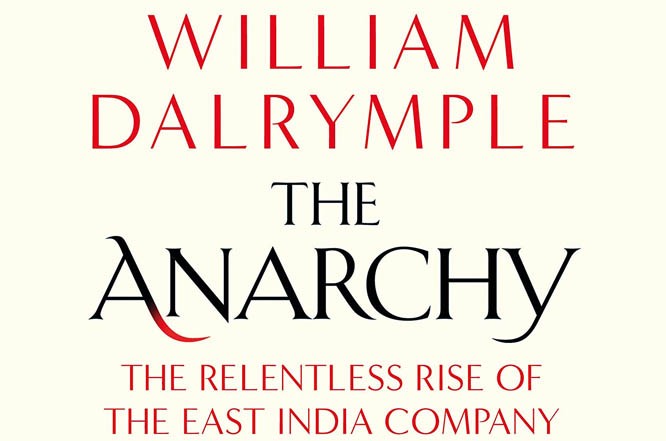
Dalrymple’s commanding account of how Britain’s East India Company conquered and looted India

About four centuries ago, a commercial company incorporated in the name of serving the British crown, named East India Company, went on to become a juggernaut in the annals of modern corporate history. The East India Company - which would exercise unprecedented influence in India from the mid-18th century until its disbandment in 1857 - retained a hegemony over trade in India which was unparalleled till it was broken in 1813.
William Dalrymple’s latest book The Anarchy: The Relentless Rise of the East India Company provides a fascinating insight into the creation of the East India Company (EIC), its rise and subsequent involvement in the politics of India. Dalrymple, drawing on years of research, based on several sources has unlocked an image of a ravenous trading corporation which was, as it is stated in the book, "‘an empire within an empire’, with the power to make war or peace anywhere in the East."
Dalrymple, whose previous books include the renowned White Mughals, The Last Mughal, City of Djinns and Return of the King brings out all his repertoire of skills and exquisite research to uncover the expropriation, crimes and corporate lobbying committed by the EIC to gain access to unfettered power across India in a span of a few decades. As the author divulges, the book aims to answer as to how a single business entity was able to displace the eminent Mughal empire as masters of the subcontinent between the years 1756 to 1803.
Going into the internecine politics of Bengal, where the EIC established a foothold, what unfolds is a saga of twists, turns, betrayals, friends turning into foes and the titanic struggle to establish dominion in epic battles with its principal adversaries; the nawabs of Bengal and Avadh, Tipu Sultan’s Mysore Sultanate and the great Maratha Confederacy. Robert Clive, the hero of the Battle of Plassey in 1756 and governor-general of Bengal played a pivotal role in establishing the political and military supremacy of the EIC in Bengal, Bihar and Orissa. The book explains how Clive enriched himself by earning large spoils from his exploits, which ended up in him procuring a seat in the House of Commons, by bribery.
One of the central characters in the book is the unfortunate but belittled Mughal Emperor Shah Alam whose reign, as it unfolds in the book, was marred by misfortune, horrific trials and tribulations. In trying to re-establish the hold of the Mughals across India, he fought against the EIC at Patna and Buxar and was a survivor of repeated battles against Clive. The emperor was nearly successful in rebuilding the empire built by his ancestors with the assistance of the last great Mughal general, Mirza Najaf Khan before his premature death.
The resource-rich province of Bengal, the coveted crown jewel in the EIC’s growing assets in India during the period is subjected to political victimisation, violence, expropriation of assets under its reign. Dalrymple also highlights the role played by Marwari bankers in bankrolling the EIC to topple Siraj Ud Daulah, and the shrewdness they exhibited in backing the winner as the old Indian elite disintegrated and the Mughal power was on the wane. Highlighting the cruelty and indifference exhibited by the EIC during the Great Famine of Bengal in 1770, in which it maintained the revenue rates to eke out maximum earning, as millions of people died due to starvation and dead corpses lined up in Calcutta and the Ganges, Dalrymple states that the failure to establish even a single soup kitchen to serve the starved and famished inhabitants shows the savageness of the EIC to the utmost core.
Unprecedented in the annals of corporate history, the EIC was able to maintain a militia of its own in India, which was larger than the entire army employed under the British crown during the period covered by the book. By 1799, the militia constituted of 200,000 Indian troops of which a meagre two percent were white officers. Interestingly, as the book points out, the army stuttered in battles against the troops of Hyder Ali and Tipu Sultan, who won a string of victories against the EIC in the early 1780s. However, Tipu Sultan despite being a heroic, valiant warrior on the battlefield failed to stem the tide as the EIC in a triple alliance with the Hyderabadis and Marathas inflicted a major defeat on him in 1792 and compelled him to cede half his kingdom to them. However, Tipu Sultan despite being severely weakened by the ceding of half his kingdom to the triple alliance kept fighting till his final defeat and death while battling Lord Wellesley and the EIC’s army in 1799.
The ingenuity of Dalrymple lies in his ability to bring out a vast and expansive history of the EIC in The Anarchy, untangling such a complex web of characters, happenings into a single book which will leave the reader engrossed. The essence of the book resonates in its ability to highlight the ruthlessness and cruelty enacted by the EIC in conquering and expropriating resources in connivance with Indian actors and how it enriched itself in the process. The author neatly sums it up in the conclusion; "The East India Company remains today history’s most ominous warning about the potential for the abuse of corporate power - and the insidious means by which the interests of shareholders can seemingly become those of the state."
The Anarchy: The Relentless Rise of the East India Company
Author: William Dalrymple
Publisher: Bloomsbury
Pages: 522
Price: Rs1,995/-